The MSI Z370 Gaming Pro Carbon AC is here, will it race ahead of the competition or suffer from an overheated engine!?
The wait is finally over and the much awaited response from Intel to the rising threat from AMD's Ryzen is finally here in form of the Coffee Lake CPUs from Intel. The Coffee Lake lineup is not only Intel's counter attack to AMD Ryzen in the mainstream segment but is also the first time when Intel has pushed its mainstream processors beyond the quad-core mark technically giving consumers hexa-core CPU in the same price point which earlier had only quad-core CPUs to offer!
As always with a new platform we need new motherboards and so is the case with Coffee Lake which works upon the new Z370 PCH which is the direct successor to the Z170 and Z270 chipsets which hosted the Sky Lake and Kaby Lake CPUs respectively. Unlike previous generations so far we only know about Z370 PCH motherboards that would support the new processors and there is no word upon any lower or budget PCH based boards.
Thanks to MSI India today we have with us the MSI Z370 Gaming Pro Carbon AC Motherboard for review making it our first experience with the new platform & since its the Pro Carbon series our expectations are already a bit high due to the solid reputation that this series motherboards have build over the past few years across various platforms!
Technically the Z370 PCH and the Z270 PCH are identical in every way including the PCIe lane distribution between the various devices and slots allotted from the CPU and PCH side. The CPU provides 16 PCIe lanes while rest is taken care by the PCH itself. Priced in at $200 or Rs 19,500 in India the MSI Z370 Gaming Pro Carbon AC comes with a similar layout which we'll be discussing later on and is also loaded with certain peculiar features such as dual M.2 slots, six SATA III ports, provision for 3D printed parts and a Bluetooth-WiFi support via an adapter!
What's in the Box!?
MSI has a different color scheme for each of its motherboard range and the same goes for the Carbon series motherboards that pretty much like its previous generations is, well mostly black with hues of colors signifying its RGB nature.
The front doesn't have much to divulge in terms of feature set nor has an image of the motherboard instead the entire real estate is occupied by a dark and mystical image of the IO cover so bye bye to the god old sports car!
The back unlike the front is printed to the brim with features! A detailed marked diagram of the motherboard is printed in one corner highlighting all the physical features and on the right we see features such as the Mystic LED, Turbo U.2, USB 3.1 briefly explained.
Open the box and you'll find the motherboard in an anti-static bag resting on top of the bottom compartment that houses all the accessories.
On the accessories front the Z370 Pro Carbon AC is quite humble yet provides all the accessories needed to get one started. We have a WiFi Antenna installation guide, User’s manual, Cable labels, Driver and utility DVD, Quick installation guide, Registration insert, SLI HB Bridge, USB 2.0 header extension cable, I/O Shield, Two SATA cables, WiFi/Bluetooth PCIe card, 2 x WiFi Antennae, Screw for PCIe card, Rainbow RGB LED Extension cable 80cm, Corsair HD RGB LED cable 50cm and Y-splitter RGB LED Extension cable 80cm.
Closer Look and Features
MSI went low key with this one over here aswell. Simply placing the motherboard out of the box shows the stark reality that the motherboard is indeed different from what the usual trend is going on in the motherboard market today.
The Z370 Gaming Pro Carbon is one of the few motherboards out there that shout elegance from every corner! Its a full matte black product with highlights of carbon fiber vinyl on the I/O shield, PCH while certain areas are highlighted by white plastic cover accentuated by metal strips and underlying LEDs that can be used as per one's own whims.
The motherboard at the back is clear with nothing special going on and has the various brand and licensing logos printed near the bottom half.
Looking at the CPU socket area we realize that it is extremely clean and specious with ample space to accommodate big air coolers aswell. The first M.2 slot is located right below the socket which has two advantages, the first PCIe slot is shifted downwards which gives more space and cooling room for air coolers and one doesn't have to worry about the stock cooler sucking in hot air generated by the hot backplate of graphics cards also the M.2 port is in an open area which keeps it cooler when compared to the ones located between the PCIe slots or below the PCH.
DIMM slots on the reinforced by metal shields that not only work as an EMI shielding to the RAM sticks to ensure hindrance free performance but also imparts tensile strength to the slots in case one uses tall or heavy Memory kits like my Kingston HyperX Predator.
These support a maximum of 64GB DDR4 memory kit working at a maximum frequency of 4000Mhz+. Also the mounting mechanism is changed and both the locking brackets need to be opened prior to DRAM installation.
The socket on the MSI Z370 Gaming Pro Carbon is a LGA1151 socket which though has the same number of pins as the previous generation Kaby Lake and Sky Lake CPUs this isn't backward compatible since the pin layout is different to support the new hexa core processors so a you need to buy a new Z370 motherboard for a Coffee Lake CPU. Good thing is that all the existing coolers in the market would fit on this new socket without any issues or the need of a new bracket etc
Turn your gaze towards the PCIe area and we see three PCIe 3.0x16 slots and three PCIex1 slots for devices of a bygone era! Two M.2 slots is also provided that we'll discuss later on.
Two of the three full sized PCIe slots are armored to support large and heavy graphics card. If you are using a Coffee Lake CPU then the configuration would be as follows for SLI configurations:
Single Card: 16x/0/0/
Dual SLI: 8x/8x/0/
Tri SLI: 8x/8x/4x/
The PCIe Slots have three LED embedded at the bottom and lit up red when the slot is populated by a graphics card. They turn up white when the graphics card installed is using less than 16xPCIe lane.
A notable fact over here is that in ATX board like this you tend to find seven PCIe slots in total with four full length and three PCIex1 but in the MSI Z370 Gaming Pro there are only six eliminating the top most slot. By doing this MSI cleverly managed to shift the DIMM slots down by half an inch which in-turn cleared out some space in the CPU area and above it giving one the flexibility to choose from a range of beefy CPU air cooler without any compatibility issue.
For the I/O panel we have one PS/2 keyboard/mouse port, one HDMI port, one USB Type C with 3.1 Gen 2 support, two USB 2.0 Type-A ports and four USB 3.1 Type-A ports port. A couple of USB 3.0/2.0 ports along with one RJ-45 port & one optical S/PDIF Out connector is provided. Audio jacks are five in number for a 5.1 channel surround sound experience.
The two USB ports above the HDMI port are VR Boost enabled which we'll discuss later on.
WiFi and Bluetooth functions are provided via an add-in card on this motherboard and not embedded in the main PCB. The prime reason for doing so is cost cutting since MSI Z370 Pro Carbon Motherboard comes in two variants one being the AC and another a non AC model that are both identical in everything both technically and aesthetically but the add in WiFi Bluetooth card is missing from the non AC model which makes it easier for MSI to sell two models.
On the left side of the board we have the Audio Boost 4 technology powered by a Realtek ALC 1220 5-channel CODEC which is an upgrade to the ALC 1150 used previously by most of the manufacturers and protect by an LED illuminated isolation strip to prevent any static distortion. This arrangement is solidified with gold plated Chemi-con capacitors and three Texas Instruments OP1562 op-amps to power headphones and provide a surround sound experience.
Along the bottom of the motherboard are two of the six SATA III ports strangely isolated from the other four loacted on the right side near the PCH which could make cable management tricky.
The CPU is powered by an 10-phase Military Class-5 power delivery system controlled by a NIKOS PK832BA PWM controller and constituted of 10-years rated Titanium Choke and Black Caps. This is not an all digital power delivery system but a reliable one for sure.
VCore and VccGT phasea are handled by a uP9508Q 3+2 phase PWM controller on this motherboard which is a good configuration and I expect to see some impressive and stable overclocking results delivered by the Z370 Gaming Pro Carbon.
Fan speed, I/O activity and even temperatures of various components on the motherboard are managed and channeled via the Nuvoton’s NCT6795D chip.
Four ASMedia ASM1480 multiplexers are responsible for routing the PCIe lanes between the two silver x16 slots.
An Intel i©14 EAR48U82 chip is responsible for the LAN functions on the MSI Z370 Gaming Pro Carbon AC.
Some of the USB 3.0 and 3.1 USB ports on the board are controlled by the Asmedia ASM314 chip to shed load from the CPU.
BIOS and Bundled Software
BIOS
UEFI BIOS is getting more and more common with each manufacturer opting for it due to its simple and flexible interface along with the option to navigate via a mouse rather than a keyboard exclusive BIOS. MSI is no different and has offered not one but two versions of BIOS, EZ and Advanced versions, with the MSI Z370 Gaming Pro Carbon so as to suit every customer's needs.
On boot up by default you'll be greeted with a more comprehensive and detailed EZ BIOS screen. This is a crammed up screen that has the details about all the components installed on the board along with options laid out neatly under clear tabs on the left side. If you want to change fan speeds, maybe boot devices, or use its automated overclocking function or XMP, you can do so quickly and easily.
This is a much preferred version for the beginners and though it comes with a Game Boost Knob on the top left its useless since the Gaming Pro Carbon doesn't support this feature. I personally loved the "Memory Try It!" feature which comes with pre-sets to overclock your memory on the fly & are quite useful for everyone.
On pressing the F7 key you'll be teleported into the Advanced BIOS version or the traditional MSI UEFI BIOS version. This is a version that all the over clockers will love since the settings are broadly laid out with tab heading like Over Clocking Settings itself. A plethora of features are there out of which I'm showing you a selective few.
Bundled Software
This is the era when manufacturers provide customers with not just a motherboard and utility softwares that act more like blotwares if nothing else. Gigabyte App center is already what I've reviewed a lot of time & it has never failed to impress but MSI is no less rather a bit more refined in their approach.The heart of the software set is the MSI command set which gives you general features and information regarding the CPU, GPU, Fan Speed, IGP and the Game Boost knob...again!
Also one beautiful graphical window is there that provides you with temperature readings of each component & even tell you where they are located on the board.
MSI Mystic LED is the new suite that we see in the X299 platform and it replaces the MSI Gaming App for controlling the LED lighting on the motherboard & other components. It lets you control the patterns and color in which you want the motherboard to glow but lacks customization options since you cannot assign colors to the PCH heatsink and VRM heatsink individually moreover the layout needs a bit more refinement which I expect MSI to fix in their new update for the suite.
Benchmarks and Overclocking
Putting all the components together and booting up into Windows was a breeze with the MSI Z370 Gaming Pro Carbon. Everything worked properly and installed swiftly without any issue. The motherboard looks elegant and all black when off or when the LEDs are turned down ensuring no hindrance with the glow and appearance of the motherboard LEDs whatsoever.
For the benchmarks we used the following test setup configuration --
CPU: Intel Core i5 8600K
Motherboard: MSI Z370 Gaming Pro Carbon AC
RAM: Kingston HyperX Predator 16GB DDR4 3000Mhz
Cooler: Cooler Master MasterLiquid Pro 280
Graphics Card: Gigabyte GTX 1050Ti G1 Gaming OC
Storage: Corsair Neutron GTX 480 480GB
Secondary Storage: ADATA XPG SX8000 256GB M.2 SSD
Power Supply: Cooler Master MasterWatt Lite 700
OS: Windows 10 Pro 64-bit
GPU Driver: ForceWare 375.70
BIOS: A.00
We booted into Windows easily with the i5 8600K at 4.2Ghz boost on the MSI Z370 Gaming Pro Carbon and all benchmarks completed successfully without any hiccups. Sadly the motherboard couldn't support the HyperX Predator at 3000Mhz which is one of two rated XMP profiles that this memory kit comes with even after flashing to the latest BIOS from the MSI website and I had to settle down with 2666Mhz. This is a common issue with new platforms and should resolve with the upcoming BIOS but as of now we'll have to do with 2666Mhz.
For overclocking we managed a satisfactory 5Ghz stable at 1.28v but as the temperatures were well within the safe range and so were the VCore voltages I went ahead and achieved a stable 5.1Ghz with 1.29v and the system help stable across all the benchmarks which is nothing short of impressive.
AIDA64 Cache & Memory Benchmark
AIDA64 Extreme Edition is a great tool to bench your CPU and RAM in terms of their read-write-copy abilities. Our i5 8600K showed an impressive score along with the HyperX Predator kit.
AIDA64 GPGPU
The reason for including this benchmark was to simply observe the AES and Hash Test which is a determent of how easily your CPU or GPU can crunch complex calculations and higher score is always regarded better.
7-zip
7zip is a compression and decompression program that utilizes the processing power of the CPU alone. It is a synthetic benchmark that gives results very close to real life scores.
Cinebench R15 and Cinebench R11.5
Cinebench uses Maxon's Cinema 4D engine to render a photo-realistic scene of some shiny balls and weird things (we miss the motorbike). The scene is highly complex, with reflections, ambient occlusion and procedural shaders so it gives a CPU a tough workout.
As Cinema 4D is a real-world application - used on films such as Spider-Man and Star Wars - Cinebench can be viewed as a real-world benchmark.
wPrime v2.10
wPrime is a leading multithreaded benchmark for x86 processors that tests your processor performance by calculating square roots with a recursive call of Newton’s method for estimating functions.
SuperPi Mod 1.5
SuperPi is a simple program that utilizes the processing power and memory speed of the system to calculate the value of Pi upto 1 Million or 32 Million decimal point depending upon what you choose. The time is calculated in minutes and seconds, we'll take them both in seconds, so lower the score faster is your computer.
3DMark Fire Strike & Time Spy
Fire Strike by 3D Mark is a test suit that plays a cinematic scene to determine the FPS, GPU temperature and CPU temperature scaling everything via a cumulative score. It is a great tool to benchmark your GPU since the render is GPU dependent.
PCMark 10
The latest offering from PCMark is the PCMark 10 and unlike its predecessor the new suite evaluates the entire system performance through just one long test, though you can always opt for the quicker and smaller ones, but the test for modern offices and home is the perfect replica of what one professional would do in their daily lives.
The performance is evaluated through basic tests like video conferencing and web browsing to complex tasks such as graphic and video editing or even rendering through POV Ray!
Crysis 3
I can't start gaming benchmarks without running my all time favorites Crysis 3 but its a game that no system loves! The CryEngine 3 behind this scenic beauty can bring down any system to its knees and I mean any system. I set everything to Ultra at 1920x1080 resolution with MSAA 4X and motion blur high.
Battlefield 1
The latest installation to the Battlefield franchise and mind it the grandest one of them all aswell, Battlefield 1 is a prequel to the infamous Battlefield 1942 placing the players right in the middle of World War 1. Based on the latest Frostbite Engine by EA-DICE, Battlefield 1 takes advantage of DirectX 12 with asynchronous compute to weave together richly detailed worlds. It is heavily taxing on current-generation hardware, and you're handsomely rewarded for investing more into your graphics setup. Settings are at Ultra preset with full HD resolution.
DOOM
Finally we've introduced this much awaited titled to our benchmarks! Developed by ID Software Doom or popularly written as DOOM is a reboot of the older Doom series. Its fast and scary with more than enough variety of guns that you can ever imagine or even use!
Its OpenGL and quality is set to Ultra.
My Verdict
Intel Coffee Lake isn't exactly the refreshing morning cafe that you'd expect it to be.....there I said it straight! Its great thing that you can now buy a 6 core CPU for lesser price and probably not have to shell out extra bucks just for the X299 platform since a quad core wouldn't cut through your work load. But and its a big but, the only good CPUs are in form of the unlocked processors such as the i5 8600K that we tested today as the locked versions have nothing great to offer considering their architecture is still the same and you don't get much for buying a whole new motherboard and CPU but just two extra cores! People looking to upgrade from a Skylake platform might see Coffee Lake as a lucrative option but Kaby Lake users shouldn't probably look in this direction at all.On the other hand motherboard manufacturers like MSI have done a splendid job when it came to designing the motherboard. The MSI Z370 Gaming Pro Carbon is a breath of fresh air and its worth mentioning that MSI has been constantly changing and evolving their Pro Carbon lineup as per time and user feedback. The Z370 Gaming Pro Carbon has an entirely new design which is infact a refined version of the X299 Gaming Pro Carbon which is a beautiful motherboard in its own rights.
MSI cleverly ditched the redundant SATA express and U.2 connector to implement dual M.2 connectors along with fully functional tri PCIe slot configuration with a bunch of USB 3.1 ports all working at the same time thanks to the brilliant use of the 24 PCIe lanes that the Z370 PCH has to offer. On the down side the motherboard does lack some vital on board buttons such as BIOS reset button. Also the LEDs are a bit clumsy to control and the Mystic Lights software needs some tweaking from MSI's end to make the whole motherboard a bit more appealing.
The LEDs are yet again meticulously implemented by MSI on a pure black board and nifty features such as Memory Try it! in the BIOS are a welcome move. For a motherboard that costs around Rs. 19000 in India its steal deal for almost anyone out there.
"MSI Z370 Gaming Pro Carbon AC is a Pro in terms of balance between much needed features, distinctive yet elegant looks and to the point pricing. Highly recommend to anyone who's willing to buy the new Z370 platform without blowing a hole in their pocket!"
Pros -- Elegant Looks
- Handles overclocking well
- Solid build quality
- Aptly Priced
- RGB implementation is subtle and effective
- Has WiFi and Bluetooth
- Lacks some vital onboard buttons
- Bundled Software such as Mystic Light needs refinement









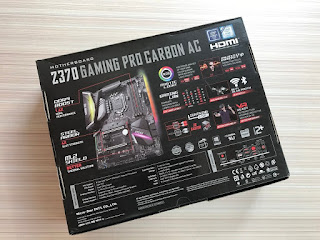




















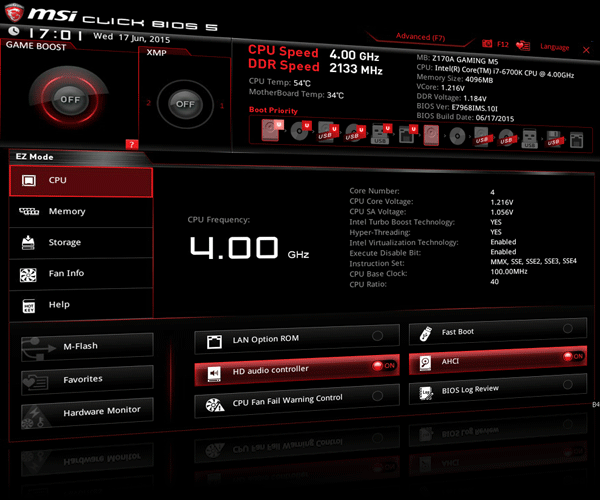


















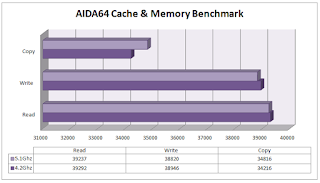







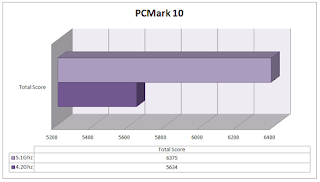






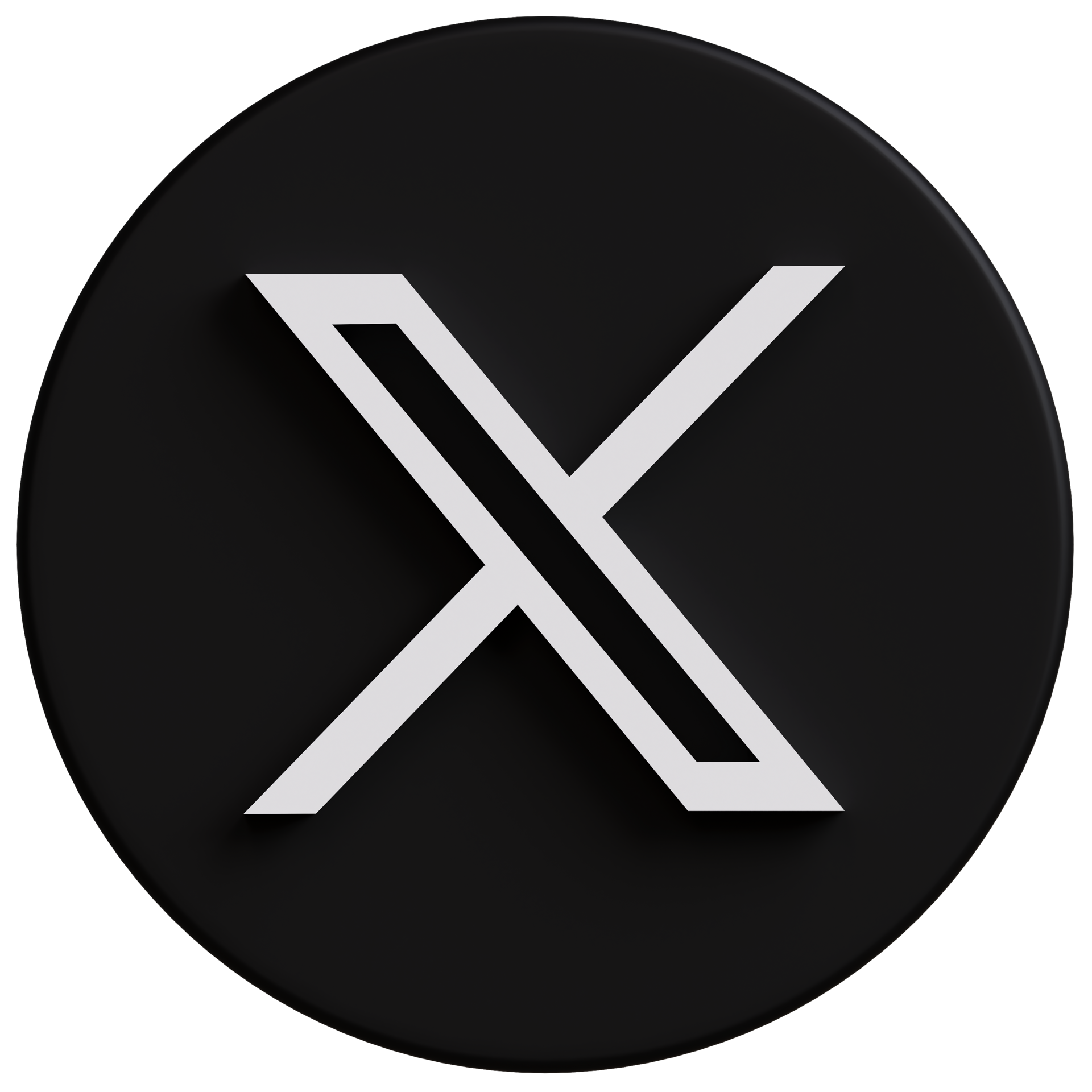










.JPG)
0 comments:
Post a Comment